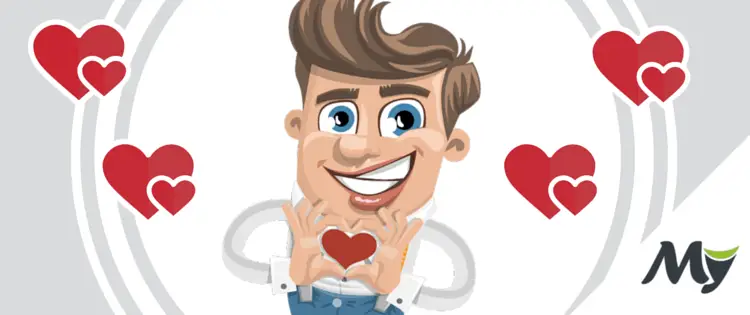
Learning and remembering new English words in general can sometimes be challenging; having to understand and respond to what your colleagues are saying in the office can be even harder!
In the online marketing industry, people tend to use a lot of jargon (or technical terms) in their conversations and if you are not familiar with these words, it may be very difficult for you to follow what they are saying!
Here is some of the most common terminology used when discussing online marketing; I have divided them into categories to help you find related groups of words easily. The categories have been listed below and you can click on them to be taken directly to your chosen list:
Common Online Marketing Terms Explained
- Affiliate Marketing
- Blogging and Publishing
- Business and E-Business
- Domain Names
- E-Commerce
- Email Marketing
- Online Advertising
- Search Engine Marketing
- Search Engine Optimisation
- Social Media Marketing
- Web Analytics
- Web Design and Marketing
- Web Hosting and Connectivity
- Online Marketing Acronyms

1. Affiliate Marketing Vocabulary
Affiliate: the publisher/salesperson in an affiliate marketing relationship.
Affiliate Merchant: the advertiser in an affiliate marketing relationship.
Affiliate Network: a value-added intermediary providing services, including aggregation, for affiliate merchants and affiliates.
Affiliate Software: software that, at a minimum, provides tracking and reporting of commission-triggering actions (sales, registrations, or clicks) from affiliate links.
Exclusivity: contract term in which one party grants another party sole right with regard to a particular business function.
Payment Threshold: the minimum accumulated commission an affiliate must earn to trigger payment from an affiliate program.
Return Days: the number of days an affiliate can earn commission on a conversion (sale or lead) by a referred visitor.
Two-tier Affiliate Program: affiliate program structure whereby affiliates earn commissions on their conversions as well as conversions of webmasters they refer to the program.
Recommended for you:
How can I talk about my company if I want to present it to someone?
Useful English Phrases For Running A Business Meeting

2. Blogging and Publishing Terms and Vocabulary
AdSense: a text-based advertisement service provided by Google.com.
Blog: a frequent, chronological publication of personal thoughts and Web links. Short for Web log, blogs are part journal, part website. Typically, the newest entry (blog post) appears at the top of the page with older entries following in reverse chronological order. Several blogging platforms exist; one example would be WordPress.
Blogger: 1. A person who publishes content on the web using a blog. 2. A blog service powered by Google.com.
Blogosphere: the community of blogs and everything else related to them.
Comment Spam: irrelevant comments posted to a blog for the sole purpose of dropping a link to the spammer’s website.
Guest Blogging: writing a blog post to be published on another blog as a temporary featured author.
Podcast: a series of audio or video files that are syndicated over the Internet and stored on client computing devices for later playback.
Vlog: a blog that publishes video content.
WordPress: a popular content management system that is available as a hosted service (wordpress.com) and self-hosted platform (wordpress.org).
Recommended for you:
SHOPPING Phrases, Dialogs and Phrasal Verbs!
Polite Expressions in English: Words, Phrases and Questions

3. Business and E-Business Vocabulary
Application Service Provider: provider of applications/services that are distributed through a network to many customers in exchange for a stream of smaller payments as opposed to one fixed, upfront price.
B2B: a business that sells products or provides services to other businesses.
B2C: a business that sells products or provides services to end-user consumers.
Buzzword: a trendy word or phrase that is used more to impress than explain.
Customer Relationship Management (CRM): software solutions that help enterprise businesses manage customer relationships in an organised way. An example of a CRM would be a database containing detailed customer information that management and salespeople can refer to in order to match customer needs with products, inform customers of service requirements etc.
Disintermediation: the elimination of intermediaries in the supply chain; also referred to as “cutting out the middleman.”
Guerrilla Marketing: unconventional marketing intended to get maximum results from minimal resources.
First-Mover Advantage: a (sometimes) insurmountable advantage gained by the first significant company to move into a new market.
Free: without monetary cost.
Freemium: a technique where a business offers a free basic product, giving the customer an option to use an advanced version for a premium cost.
Inbound Marketing: a marketing model whose sales performance relies on the initiative of its client base to find and purchase a product.
Interactive Agency: an agency offering a mix of Web design/development, Internet advertising/marketing, or E-Business/E-Commerce consulting.
Marketing Automation: the use of software to automate repetitive tasks related to marketing activities and to connect different parts of the marketing funnel.
Marketing Plan: the part of the business plan outlining the marketing strategy for a product or service.
Network Effect: the phenomenon whereby a service becomes more valuable as more people use it, thereby encouraging ever-increasing numbers of adopters.
Return on Investment (ROI): the ratio of profits (or losses) to the amount invested.
Recommended for you:
English For Information Technology Professionals and Software Engineers
IT used in a sentence as Preparatory Subject or Object

4. Domain Name Vocabulary
Domain Name: location of an entity on the Internet.
Long Domain Name: domain names longer than the original 26 characters, up to a theoretical limit of 67 characters (including the extension, such as .com).
Whois: a utility that returns ownership information about second-level domains.
Recommended for you:
15 Business English Idioms and Phrases In Use
A Practical Guide to Using Diplomatic English in a Business

5. E-Commerce Vocabulary
Call to Action (CTA): the part of a marketing message that attempts to persuade a person to perform a desired action.
Conversion Rate: the percentage of visitors who take a desired action.
PayPal: an online payment service that lets its users make purchases and receive payments via a user-defined email address.
Shopping Cart: software used to make a site’s product catalogue available for online ordering, whereby visitors may select, view, add/delete, and purchase merchandise.
Recommended for you:
Formal and Informal Email Phrases Starting with Greetings
5 Decision Making Business English Phrases

6. Email Marketing Vocabulary
Auto Responder: a program that sends an automatic form response to incoming emails.
Email: the transmission of computer-based messages over telecommunication technology.
Email Marketing: the promotion of products or services via email.
Email Spam: unwanted, unsolicited email.
E-zine: an electronic magazine, whether delivered via a Web site or an email newsletter.
HTML Email: email that is formatted using Hypertext Markup Language, as opposed to plain text email.
Opt-in Email: email that is explicitly requested by the recipient. For example, when signing up for a regular newsletter.
Pass-along Rate: the percentage of people who pass on a message or file.
Permission Marketing: marketing centred on obtaining customer consent to receive information from a company.
Sig File: a short block of text at the end of a message identifying the sender and providing additional information about them.
Viral Marketing: marketing phenomenon that facilitates and encourages people to pass along a marketing message.
Recommended for you:
What is the meaning of ‘business is picking up?
7 Simple Examples of Business Email Writing in English

7. Online Advertising Vocabulary
Ad Blocking: the blocking of Web advertisements, typically the image in graphical Web advertisements.
Advertising Network: a network representing many Web sites in selling advertising, allowing advertising buyers to reach broad audiences relatively easily through run-of-category and run-of-network buys.
Analytics: also known as Web Metrics. Analytics refers to collection of data about a website and its users. Analytics programmes typically give performance data on clicks, time, pages viewed, website paths and a variety of other information. The proper use of Web Analytics allows website owners to improve their visitor experience, which often leads to higher ROI for profit-based sites.
Banner Ad: a graphical web-advertising unit, typically measuring 468 pixels wide and 60 pixels tall (i.e. 468×60). Such advertising is commonly used for internet marketing branding campaigns. Depending on their size and shape, banner ads may also be referred to as buttons, in-lines, leader boards and skyscrapers, amongst others. Banner ads can be static pictures, animated or interactive and can appear anywhere on a site.
Banner Blindness: the tendency of web visitors to ignore banner ads, even when the banner ads contain information visitors are actively looking for.
Behavioural Targeting (BT): An area of internet marketing becoming increasingly refined, behavioural targeting looks to put ads in front of people who should be more receptive to the particular message given past Web behaviour, including purchases and websites visited. The use of cookies enables online behavioural targeting.
Button Ad: a graphical advertising unit, smaller than a banner ad.
Caching: the storage of Web files for later re-use at a point more quickly accessed by the end user.
Click-through: the process of clicking through an online advertisement to the advertiser’s destination.
Click-through Rate (CTR): The average number of click-throughs per hundred ad impressions, expressed as a percentage.
Contextual Advertising: a method of serving advertisements based on the content (i.e., overall context or theme) of a web page.
Conversion Rate: the percentage of visitors who take a desired action for a website.
Cookies: information stored on a user’s computer by a website so preferences are remembered on future requests. Cookies can be beneficial to websurfers in many ways, such as remembering passwords and showing offers in which they would more likely be interested (based on their usage).
Cost per action (CPA): (also known as Cost per Acquisition) online advertising payment model in which payment is based solely on qualifying actions such as sales, leads or registrations.
Cost per click (CPC): (also known as Pay per Click, PPC or Paid Search Marketing) this is a common way to pay for search engine and other types of online advertising. CPC means you pay a pre-determined amount each time someone clicks on your advertisement to visit your site (known as click-through).
Cost per lead (CPL): online advertising payment model in which payment is based on the number of qualifying leads generated.
CPM: a common internet marketing cost structure, especially for banner advertising. You agree to pay a set cost for every one thousand impressions your ad receives. I would say this pay structure should actually be called Cost per 1000 Impressions!
Customer Acquisition Cost: the cost associated with acquiring a new customer.
eCPM: effective cost per thousand impressions (technically, “effective cost per mille”).
Frequency Cap: restriction on the amount of times a specific visitor is shown a particular advertisement.
Hit: request of a file from a Web server.
House Ad: self-promotional ad a company runs on its media outlets to put unsold inventory to use.
HTML Banner: a banner ad using HTML elements, often including interactive forms, instead of (or in addition to) standard graphical elements.
Hybrid Model: a combination of two or more online marketing payment models.
Impression: the number of times someone views a page displaying your ad.
Interstitial: an advertisement that loads between two content pages.
Keyword: a word used in a performing a search.
Keyword Research: the search for keywords related to your Web site, and the analysis of which ones yield the highest return on investment (ROI).
Keyword Marketing: putting your message in front of people who are searching using particular keywords and keyphrases.
Page View: request to load a single HTML page.
Pay per click (PPC): online advertising payment model in which payment is based solely on qualifying click-throughs.
Pay per lead (PPL): online advertising payment model in which payment is based solely on qualifying leads.
Pay per sale (PPS): online advertising payment model in which payment is based solely on qualifying sales.
Pop-up Ad: an ad that displays in a new browser window.
Pop-under Ad: an ad that displays in a new browser window behind the current browser window.
Rate Card: document detailing prices for various ad placement options.
Rectangle Ad: any one of the large, rectangular banner sizes suggested by the IAB.
Rep Firm: ad sales partner specializing primarily in single-site sales.
Rich Media: new media that offers an enhanced experience relative to older, mainstream formats.
Run of Network (RON): ad buying option in which ad placements may appear on any pages on sites within an ad network.
Run of Site (ROS): ad buying option in which ad placements may appear on any pages on sites within an ad network.
Search Retargeting: the use of a site visitor’s search history as a basis for the ads that the visitor will see.
Self-serve Advertising: advertising that can be purchased without the assistance of a sales representative.
Skyscraper Ad: an online ad significantly taller than the 120×240 vertical banner.
Sponsorship: advertising that seeks to establish a deeper association and integration between an advertiser and a publisher, often involving coordinated beyond-the-banner placements.
Stickiness: the amount of time spent at a site over a given time period and how often people return to a website. Constant updates, news feeds and exclusive content are used to make a site ‘stickier’.
Surround Session: advertising sequence in which a visitor receives ads from one advertiser throughout an entire site visit.
Text Ad: advertisement using text-based hyperlinks.
Trick Banner: a banner ad that attempts to trick people into clicking, often by imitating an operating system message.
Underdelivery: delivery of less impressions, visitors, or conversions than contracted for a specified period of time.
Unique Visitors: individuals who have visited a Web site (or network) at least once in a fixed time frame, typically a 30 day period.
Vertical Banner: a banner ad measuring 120 pixels wide and 240 pixels tall.
Website Traffic: the amount of visitors and visits a Website receives.
Recommended for you:
18 Powerful Websites to Improve Your Writing Skills in English
How to Write Email for Senior Management?

8. Search Engine Marketing
Algorithm: the term search engines use for the formulae they use to determine the rankings of your Natural Listings. Search engines will periodically send a Spider through your website to view all its information. Their programmes analyse this and then other data to value your site and fix whether or not, and how high or low pages on your site will appear on various searches. These algorithms can be very complicated and search engines closely guard their algorithms as trade secrets.
Call to Action (CTA): the part of a marketing message that attempts to persuade a person to perform a desired action.
Click-through: the process of clicking through an online advertisement to the advertiser’s destination.
Click-through Rate (CTR): The average number of click-throughs per hundred ad impressions, expressed as a percentage.
Contextual Advertising: This is a feature offered by major search engine advertisers allowing your advertisement to be placed next to related news articles and on other Web pages. Contextual Advertising matches Web content from the display page with your advertised search term(s).
Conversion Rate: the percentage of visitors who take a desired action, in other words, people that are ‘converted’ based on your goals and measurements. This could be anything from signing up for free information, completing a survey or making a purchase.
Cost-per-action (CPA): online advertising payment model in which payment is based solely on qualifying actions such as sales or registrations.
Cost-per-click (CPC): the cost or cost-equivalent paid per click-through.
Crawler: a component of a search engine that gathers listings by automatically ‘crawling’ the Web. A search engine’s crawler (also known as a spider, robot or bot) follows links to Web pages. It makes copies of those pages and stores them in a search engine’s index.
Customer Acquisition Cost: the cost associated with acquiring a new customer.
Keyword: a word used in performing or refining a search for information.
Keyword Marketing: putting your message in front of people who are searching using particular keywords and key phrases.
Keyword Research: the search for keywords related to your Website, and the analysis of which ones yield the highest return on investment (ROI).
Pay per Click (PPC): online advertising payment model in which payment is based solely on qualifying click-throughs.
Pay per Click Search Engine: a search engine where results are ranked according to the bid amount, and advertisers are charged when a searcher clicks on the search listing.
Return on Investment (ROI): the ratio of profits (or losses) to the amount invested.
Search Engine: a program that indexes documents, then attempts to match documents relevant to the users search requests.
Search Retargeting: the use of a site visitor’s search history as a basis for the ads that the visitor will see.
Self-serve Advertising: advertising that can be purchased without the assistance of a sales representative.
Recommended for you:
English for Companies
Other Ways to Say BYE BYE!

9. Search Engine Optimization Vocabulary
Anchor Text: the clickable words of a hypertext link; they will appear as the underlined blue part in standard Web design like this – MyEnglishTeacher.eu.
Brand Stacking: Multiple page one listings from a single domain.
Cloaking: Showing a search engine spider or bot one version of a Web page and a different version to the end user. Several search engines have explicit rules against unapproved cloaking. Those violating these guidelines may find their pages penalised or banned from a search engine’s index.
Day Parting: This refers to serving ads at different times of the day and day sof the week. For example, if you wanted to, you could show your ads from 11:00-14:00 only on Thursdays.
Description Tags: HTML tags which provide a brief description of your site that search engines can understand.
Deep Linking:linking to a web page other than a site’s home page.
Delisting: When pages or whole websites are removed from a search engine’s index. This may happen because they have been banned, but not necessarily, it could also be for various other reasons.
Description Tag: an HTML tag used by Web page authors to provide a description for search engine listings. Description tags should contain the main keywords of the page it is describing in a short summary, but don’t use too many tags here otherwise it could make your page seem too generic and unattractive to websurfers!
Doorway Domain: a domain used specifically to rank well in search engines for particular keywords, serving as an entry point through which visitors pass to the main domain.
Doorway Page: a page made specifically to rank well in search engines for particular keywords, serving as an entry point through which visitors pass to the main content.
Inbound Link: a link from a site outside of your site.
Internal Linking: placing hyperlinks on a page to other pages within the same site.
Invisible Web: the portion of the Web not accessible through Web search engines.
Keyword: a word used in a performing a search.
Keyword Research: the search for keywords related to your Website and the analysis of which ones yield the highest return on investment (ROI).
Keyword Stuffing: the excessive, unnatural use of keywords on a web page for search engine optimisation purposes.
Keywords Tag: META tag used to help define the primary keywords of a Web page.
Landing Page: the first page a person sees when getting through to your website from an advertisement.
Link Building: the process of increasing the number of inbound links to a website in a way that will increase search engine rankings: a crucial part of search engine optimisation.
Link Checker: tool used to check for broken hyperlinks.
Link Popularity: a measure of the quantity and quality of sites that link to your site.
Link Text: the text contained in (and sometimes near) a hyperlink. For example: If you would like more information about phrasal verbs, click here (the text in bold is the link text).
Log File: file that records the activity on a Web server.
Long Tail Keywords: rather than targeting the most common keywords in your industry, you can focus on more niche terms that are usually longer phrases but are also easier and quicker to rank for in the search engines.
META Tag Generator: tool that will output META tags based on input page information.
META Tags: tags to describe various aspects about a Web page.
Organic Search Results: these are free listings on search engine results that appear because of their relevance to the search terms, as opposed to their being advertisements.
Outbound Link: a link to a site outside of your site.
Portal: a site featuring a suite of commonly used services, serving as a starting point and frequent gateway to the Web (Web portal) or a niche topic (vertical portal).
Reciprocal Links: links between two sites, often based on an agreement by the site owners to exchange links. This type of link is generally much less desirable than a one-way inbound link.
Search Engine: a program that indexes documents, then attempts to match documents relevant to the users search requests.
Search Engine Optimisation: the process of choosing targeted keyword phrases related to a site, and ensuring that the site places well when those keyword phrases are part of a Web search. It could be seen as a fancy way of saying ‘make your site search engine friendly’.
Search Engine Spam: excessive manipulation to influence search engine rankings, often for pages, which contain little or no relevant content.
Search Engine Submission: the act of supplying a URL to a search engine in an attempt to make a search engine aware of a site or page.
SERP: shorthand for a page of search engine listings, typically the first page of organic results.
Title Tag: HTML tag used to define the text in the top line of a Web browser, also used by many search engines as the title of search listings.
Top 10: the top ten search engine results for a particular search term.
URL: location of a resource on the Internet.
Volunteer Directory: a Web directory staffed primarily by unpaid volunteer editors.
Web Directory: organized, categorized listings of Websites.
Recommended for you:
How can I write official letters regarding the salary advance, leave application etc.?
“Looking forward for your commentaries.” Can this be used in an email?

10. Social Media Marketing
Facebook: a social networking site located at facebook.com.
Forum: a place on the internet where people with common interests or backgrounds come together to find information and discuss topics.
Like-gate: a barrier requiring a user to “Like” a brand’s page before they can access certain content from that brand on Facebook.
Moderator: at a forum, someone entrusted by the administrator to help discussions stay productive and within the guidelines.
Netiquette: short for network etiquette, the code of conduct regarding acceptable online behaviour.
Social Networking: the process of creating, building, and nurturing virtual communities and relationships between people online.
Webinar: shortened from ‘Web Seminar’. These virtual seminars allow people from all over the world to gather and discuss topics via an internet connection.
Word-of-Mouth Marketing: a marketing method that relies on casual social interactions to promote a product.
Recommended for you:
Other Ways to Say “Looking Forward”!
Other ways to say Good Luck!
11. Terms in Web Analytics
A/B Testing: a method in marketing research where variables in a control scenario are changed and the ensuing alternate strategies tested, in order to improve the effectiveness of the final marketing strategy.
Bounce Rate: 1.) In web analytics, the percentage of visitors who leave after viewing a single page.
2.) In email marketing, the percentage of emails in a campaign that are undeliverable.
Geo-targeting: a method of detecting a website visitor’s location to serve location-based content or advertisements.
Heat Map: a graphical representation of data where varying degrees of a single metric are shown using colours.
Multivariate Testing: a method in marketing research where multiple variables in a control scenario are simultaneously changed and the ensuing alternate strategies tested, in order to improve the effectiveness of the final marketing strategy.
Recommended for you:
Your Top 10 Language Exchange Websites
Facebook English: 14 Super Pages to Learn and Teach English
12. Web design terms and definitions and Marketing terms
Above the Fold: the section of a Web page that is visible without scrolling.
Ad Space: the space on a Web page available for advertisements.
ALT Text: HTML attribute that provides alternative text when non-textual elements, typically images, cannot be displayed.
Animated GIF: a graphic in the GIF89a file format that creates the effect of animation by rotating through a series of static images.
Bookmark: a link stored in a Web browser for future reference.
Content Management System: Content Management Systems (CMS) allow website owners to make text and picture changes to their websites without specialised programming knowledge of software like Adobe Dreamweaver or Microsoft FrontPage. They can be edited by anyone with basic Word knowledge via an internet connection.
Content Tags: HTML tags which define the essence of the content contained within them and readable by search spiders.
Cascading Style Sheets (CSS): a data format used to separate style from structure on Web pages. It is a way of moving style elements from individual Web pages and sites to allow for faster loading pages, smaller file sizes amongst other benefits for visitors, search engines and designers.
Favicon: a small icon that is used by some browsers to identify a bookmarked Website.
Flash: multimedia technology developed by Macromedia to allow much interactivity to fit in a relatively small file size.
Frames: a structure that allows for the dividing of a Web page into two or more independent parts.
Home Page: the main page of a Web site.
JavaScript: a scripting language developed by Netscape and used to create interactive Web sites.
Linkrot: when Web pages previously accessible at a particular URL are no longer reachable at that URL due to movement or deletion of the pages.
Navigation: that which facilitates movement from one Web page to another Web page.
Premium WordPress Theme: a theme coded for the WordPress content management system that costs money.
Shopping Cart: software used to make a site’s product catalog available for online ordering, whereby visitors may select, view, add/delete, and purchase merchandise.
Site Search: search functionality specific to one site.
Splash Page: a branding page before the home page of a Web site.
Web Browser: a software application that allows for the browsing of the World Wide Web.
Web Design: the selection and coordination of available components to create the layout and structure of a Web page.
Website Usability: The ease with which visitors are able to use a Web site.
WordPress: a popular content management system that is available as a hosted service (wordpress.com) and self-hosted platform (wordpress.org).
Recommended for you:
10 Types of Facebook User. What Type of User Are You?
Who wants to practice English on Facebook? Share your id

13. Web Hosting Terms and Definitions and Connectivity
Anonymous FTP: an option in FTP that allows users to download files without having to establish an account.
ASP Hosting: Web hosting that supports Active Server Pages, a server-side scripting environment from Microsoft.
Bandwidth: how much data can be transmitted in a period of time over a communications channel, often expressed in kilobytes per second (kbps).
Burstable Bandwidth: a hosting option that allows sites to use the available network capacity to handle periods of peak usage.
Business Hosting: Web hosting geared towards the mission-critical functions demanded by business-class customers.
CDN (Content Delivery System): a system of geographically distributed servers designed to accelerate the delivery of web pages and files by routing user requests to the server that’s in the best position to serve them.
Collocated Hosting: hosting option whereby the host provides and is responsible for the equipment, dedicating an entire server to the client’s websites.
Data Transfer: The total amount of outbound traffic from a website*, typically measured in gigabytes (GB).
Dedicated Hosting: hosting option whereby the host provides and is responsible for the equipment, dedicating an entire server to the client’s websites.
Dedicated IP: an IP address dedicated to a single website.
Managed WordPress Hosting: web hosting optimized specifically for WordPress, where the hosting company assumes many of the routine maintenance tasks.
Web Hosting: the business of providing the storage, connectivity, and services necessary to serve files for a website.
Recommended for you:
10 Websites to learn and practice English Grammar
8 English Learning Websites You Need to Become Proficient

Online Marketing Acronyms
AOL: America Online
ASP: Application Service Provider
AV: AltaVista
B2B: Business to Business
B2C: Business to Consumer
CMS: Content Management System
CPA: Cost per Action
CPC: Cost per Click
CPL: Cost per Lead
CPM: Cost per Impression (Thousand)
CPS: Cost per Sale
CR: Conversion Rate
CRM: Customer Relationship Management
CRO: Conversion Rate Optimisation
CSS: Cascading Style Sheets
CTA: Call to Action
CTR: Click-Through Rate
DA: Domain Authority
DNS: Domain Name System
eCPM: Effective CPM (Cost Per Mile)
EPC: Earnings per Click
FB: Facebook
FFA: Free-For-All (Link List)
FTP: File Transfer Protocol
GA: Google Analytics
IBL: Inbound Link
IM: Instant Messaging
KPI: Key Performance Indicator
LPO: Landing Page Optimisation
MSN: Microsoft Network
NSI: Network Solutions
OBL: Outbound Link
PA: Page Authority
PFI: Pay for Inclusion
PFP: Pay for Performance
PPC: Pay per Click
PPCSE: Pay per Click Search Engine
PPL: Pay per Lead
PPS: Pay per Sale
PR: PageRank
PV: Page View
QS: Quality Score
RFP: Request for Proposal
ROI: Return on Investment
RON: Run Of Network
ROS: Run Of Site
RSS: Real Simple Syndication
RT: Retweet
SEM: Search Engine Marketing
SEO: Search Engine Optimisation
SERP: Search Engine Results Page
SMM: Social Media Marketing
TLD: Top Level Domain (The TLD is determined by whatever comes at the end of a domain name at its root. For example, for www.myenglisheteacher.eu the TLD is .eu)
UGC: User Generated Content
UI: User Interface
URL: Universal Resource Locator
USP: Unique Selling Proposition
UV: Unique Visitor
WMT: Webmaster Tools
WOM: Word of Mouth
WP: WordPress
WWW: World Wide Web
Y!: Yahoo!
Recommended for you:
Best English Grammar and Spelling Checkers Online
2 Amazing Tips To Memorize And To Remember English Words
If there are any other terms that you know of, which you don’t understand or would like us to add to this list, then please let us know!




























